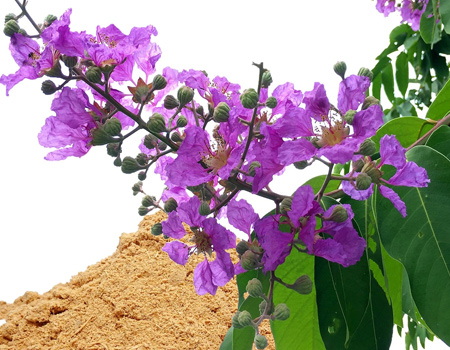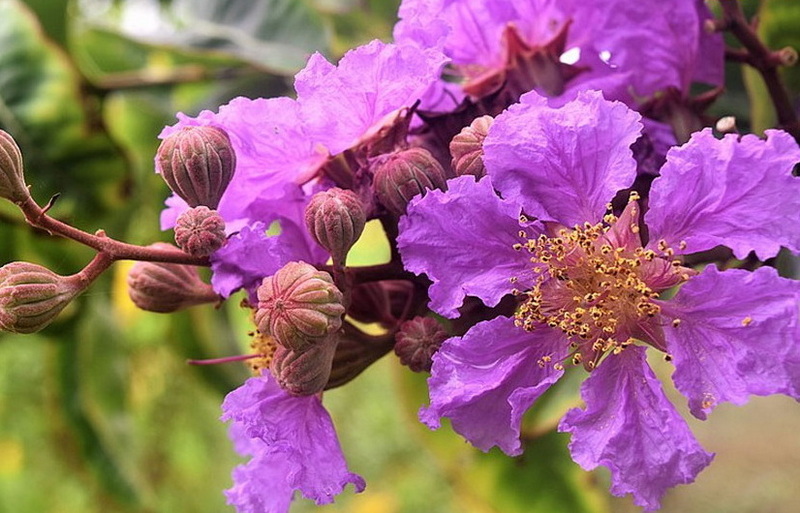Content Menu
● Introduction to Banaba and Corosolic Acid
>> Corosolic Acid Structure and Properties
● Mechanisms of Action
● Benefits for Metabolic Health
● Production and Standardization of Banaba Leaf Extracts
>> Process for Producing Banaba Leaf Extract
● Safety and Side Effects
● Clinical Evidence and Studies
>> Clinical Trials Summary
● Potential Interactions and Contraindications
● Future Directions
● Conclusion
● Frequently Asked Questions
>> 1. What is Corosolic Acid?
>> 2. How Does Corosolic Acid Lower Blood Sugar?
>> 3. Are Banaba Leaf Extracts Safe to Use?
>> 4. Can Corosolic Acid Help with Weight Loss?
>> 5. How is Corosolic Acid Extracted from Banaba Leaves?
● Citations:
Corosolic acid, a key component of Banaba leaf extracts, has garnered significant attention for its potential benefits in metabolic health. This article delves into the mechanisms behind corosolic acid's efficacy, its effects on metabolism, and why it is considered a valuable natural compound for managing conditions like diabetes and metabolic syndrome.

Introduction to Banaba and Corosolic Acid
Banaba leaves, derived from the Lagerstroemia speciosa plant, have been traditionally used in Southeast Asian medicine for their antidiabetic properties. The primary active compound responsible for these effects is corosolic acid, a pentacyclic triterpenoid known for its insulin-like activity.
Corosolic Acid Structure and Properties
Corosolic acid has a molecular formula of C30H48O4 and a molecular weight of 472.70 g/mol. Its structure is crucial for its biological activity, allowing it to interact with various cellular targets involved in glucose and lipid metabolism.
Mechanisms of Action
Corosolic acid exerts its metabolic effects through several mechanisms:
1. Enhanced Insulin Sensitivity: It increases the body's sensitivity to insulin, facilitating glucose uptake into cells and reducing blood glucose levels.
2. Inhibition of Alpha-Glucosidase: This enzyme breaks down carbohydrates into simpler sugars. By inhibiting it, corosolic acid slows down carbohydrate digestion and absorption, thereby reducing postprandial blood glucose spikes.
3. Impaired Hydrolysis of Sucrose and Starches: Corosolic acid inhibits the intestinal hydrolysis of sucrose, which is composed of glucose and fructose, further contributing to its blood glucose-lowering effects.
4. Decreased Gluconeogenesis: It reduces the production of glucose in the liver by enhancing the production of fructose-2,6-bisphosphate, which inhibits gluconeogenic enzymes.
5. Antihyperlipidemic Effects: Corosolic acid also improves lipid metabolism by decreasing serum triglycerides and cholesterol levels.
Benefits for Metabolic Health
The benefits of corosolic acid extend beyond blood glucose control:
- Weight Management: Studies have shown that corosolic acid can facilitate weight loss, which is beneficial for individuals with metabolic syndrome.
- Antioxidant and Anti-Inflammatory Effects: These properties help mitigate oxidative stress and inflammation associated with metabolic disorders.
- Cardiovascular Health: By improving lipid profiles and reducing blood pressure, corosolic acid may contribute to lowering cardiovascular risk factors.

Production and Standardization of Banaba Leaf Extracts
The production of Banaba leaf extracts with high corosolic acid content involves specific extraction processes. A patented method in Japan focuses on optimizing the extraction conditions to achieve high corosolic acid yields.
Process for Producing Banaba Leaf Extract
1. Harvesting: Banaba leaves are harvested from mature plants.
2. Extraction: Leaves are subjected to solvent extraction (e.g., ethanol or water) to obtain the extract.
3. Purification: The extract is purified to increase corosolic acid concentration.
Safety and Side Effects
Corosolic acid and Banaba extracts have been generally well-tolerated in clinical studies, with no significant adverse effects reported. However, as with any dietary supplement, it is crucial to consult healthcare professionals before use, especially for individuals with diabetes or those taking medications.
Clinical Evidence and Studies
Several clinical trials have investigated the efficacy of corosolic acid in managing blood glucose levels. A study published in the Journal of Ethnopharmacology demonstrated significant reductions in fasting blood glucose levels among participants with type 2 diabetes who received Banaba leaf extract.
Clinical Trials Summary
| Study | Participants | Intervention | Outcome |
| Study 1 | Type 2 Diabetes Patients | Banaba Leaf Extract | Reduced Fasting Blood Glucose |
| Study 2 | Healthy Individuals | Corosolic Acid Supplementation | Improved Insulin Sensitivity |
Potential Interactions and Contraindications
While corosolic acid is generally safe, potential interactions with medications, particularly those used to manage diabetes, should be considered. It is advisable to monitor blood glucose levels closely when using corosolic acid alongside conventional diabetes treatments.
Future Directions
Further research is needed to fully explore the therapeutic potential of corosolic acid. This includes investigating its effects on other metabolic parameters, such as blood pressure and lipid profiles, and exploring its potential in combination with other natural compounds for enhanced metabolic benefits.
Conclusion
Corosolic acid in Banaba leaf extracts offers a promising natural approach to managing metabolic health. Its multifaceted mechanisms of action, including enhancing insulin sensitivity and inhibiting carbohydrate digestion, make it a valuable compound for controlling blood sugar levels and improving lipid metabolism. While more research is needed to fully understand its long-term effects and potential interactions with medications, corosolic acid is emerging as a key player in the management of metabolic disorders.

Frequently Asked Questions
1. What is Corosolic Acid?
Corosolic acid is a pentacyclic triterpenoid found primarily in Banaba leaves, known for its insulin-like effects and potential benefits in managing blood glucose levels.
2. How Does Corosolic Acid Lower Blood Sugar?
Corosolic acid lowers blood sugar by increasing insulin sensitivity, inhibiting alpha-glucosidase, and reducing gluconeogenesis in the liver.
3. Are Banaba Leaf Extracts Safe to Use?
Banaba leaf extracts have been generally well-tolerated in clinical studies, but it is advisable to consult a healthcare professional before use, especially for individuals with diabetes.
4. Can Corosolic Acid Help with Weight Loss?
Corosolic acid may facilitate weight loss as part of its metabolic effects, although more research is needed to confirm its efficacy for this purpose.
5. How is Corosolic Acid Extracted from Banaba Leaves?
Corosolic acid is extracted from Banaba leaves using solvents like ethanol or water, followed by purification to enhance its concentration in the final extract.
Citations:
[1] https://pmc.ncbi.nlm.nih.gov/articles/PMC3468018/
[2] https://patents.google.com/patent/JP2005263650A/en
[3] https://www.healthline.com/nutrition/banaba-leaf
[4] https://patents.google.com/patent/CN104640555A/zh
[5] https://pmc.ncbi.nlm.nih.gov/articles/PMC7723172/
[6] https://pmc.ncbi.nlm.nih.gov/articles/PMC6744118/
[7] https://www.webmd.com/vitamins/ai/ingredientmono-1089/banaba
[8] https://patents.google.com/patent/CN103355663A/zh
[9] https://patents.google.com/patent/CN108703364A/zh






























